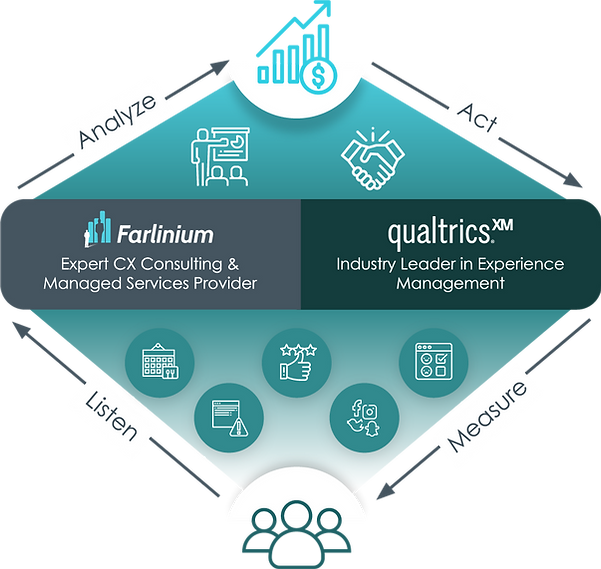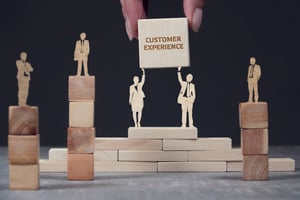Customer-centric organizations strive to stay focused on understanding customer needs by setting up...
How to Implement Journey-Centric Marketing
If you are reading this, it is likely that you work every day to improve customer experiences for your organization. You understand that when customers have better experiences, it boosts your business’s revenue and profits. But implementing it is difficult.
For more than a decade, journey-centric marketing has been an “in” term in the customer experience world, but practitioners have run into roadblocks trying to implement it in their organizations. As Jordan Seaton notes in his article, Journey-Centric Marketing is Under Delivering. Here’s What to Do About It, roadblocks include:
- Data is often inaccessible
- Customer interaction points are often unsupported
- Journeys aren’t flexible enough
- Journeys aren’t smart enough (yet)
The old adage is true - no pain, no gain. Organizations can realize tremendous gains in their return on investment - but it does take a concerted, organizational-wide effort.
Organizations can realize tremendous gains in their return on investment - but it does take a concerted, organizational-wide effort.
Let’s dig deeper into what you can do to transform your organization.
What is journey-centric marketing
Journey-centric marketing is a customer-centric approach to marketing that focuses on the entire customer journey, rather than just individual touchpoints or isolated interactions. It involves mapping out the various stages of the customer journey, and creating targeted and personalized marketing campaigns and experiences at each stage to move the customer towards a desired outcome.
The goal of journey-centric marketing is to create a seamless and consistent experience for the customer, by understanding their needs, preferences, and behavior at each stage of the journey. It also involves using data and insights to optimize the customer journey, and to identify and address any pain points or obstacles that may be preventing the customer from reaching their desired outcome. By taking a journey-centric approach, marketers can better understand and meet the needs of their customers and create more effective and relevant marketing campaigns.
By taking a journey-centric approach, marketers can better understand and meet the needs of their customers and create more effective and relevant marketing campaigns.
Forrester’s recent report, The Journey-Centric Revolution, outlines the traits and benefits of journey-centric marketing:
- Helps you focus on what your customers really want
- Leads to higher revenue, reduced costs, and better customer experience (CX), citing a Boston Consulting Group study that found that firms can “improve customer advocacy by 20 to 40 percentage points, reduce costs by 15% to 25%, and increase revenue by 10% to 20% by taking a ‘customer journey at scale’ approach.”
- Disrupts your business and operating model by looking at the whole customer journey, end-to-end, rather than just the portion that your organization owns
- Is a multiyear transformation, not a ‘one and done’ project
- Requires a shift in mindset at all levels of the organization
Again, with great investments in journey-centric marketing come great rewards. So, how do you lead your organization’s transformation well?
How to lead effective journey-centric marketing transformations
Effective customer journeys require bold and significant change at every level of the organization. It isn’t a new layer in your business - it is a foundational change. It disrupts the status quo.
Forrester notes that journey-centric marketing is a multiyear effort based on two key pillars:
- It is a three-phase transformation: activate→connecting→extend
- It requires mind shifts across the organization - and leaders will need to use catalysts, beware of pitfalls, and manage challenges
How to adopt a three-phase transformation
As noted above, the process involves three phases, moving from one to the next:
- Activate. This is all about igniting a spark in the organization, setting up sponsors and leaders for success, establishing baseline metrics, and documenting where things stand now and where you want to go.
- Connecting. This is where you grow and mature - professional customer journey roles, align executives, embed the journey framework into the organization, establish a budget, combine online and offline data to create a more comprehensive understanding of customer journeys and inspire new ideas, and more.
- Extend. This is where the transformation extends into the entire organization. It becomes part of the corporate planning process and helps drive product development and business model innovation.
The Forrester report expands on each of these, explaining how each of their recommended six operational levers become journey-centric (Structure, People, Process, Metrics, Culture, and Technology). It also digs deeper into how organizations embrace mind shifts, use catalysts, are aware of pitfalls, and manage challenges.
The Forrest report is worth a read, as it expands on each of these phases and steps to help you implement a journey-centric marketing transformation at your organization.
To read the full Forrester report, you can request it from Qualtrics here.
At Farilnium we see so much promise in journey-centric marketing, and we help our clients implement it in their organizations. We bring our decades of expertise and our partnership with Qualtrics to help you deliver transformative results at your organization. We help you listen to the Voice of the Customer across a wide range of sources, analyze that data to find actionable insights, and leverage those insights to increase revenue, reduce cost, and improve customer satisfaction.
If you would like to talk to us more about how we can partner with you, please contact us.




